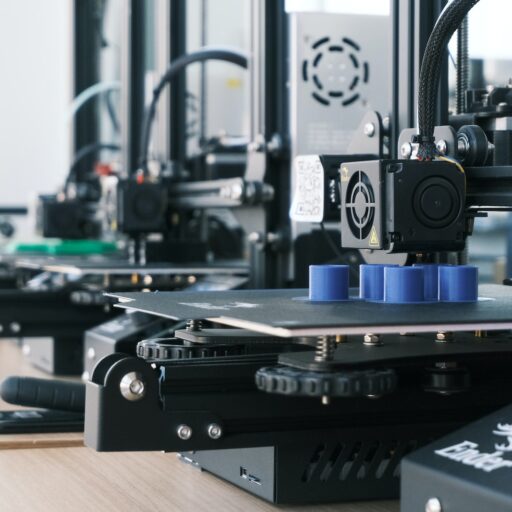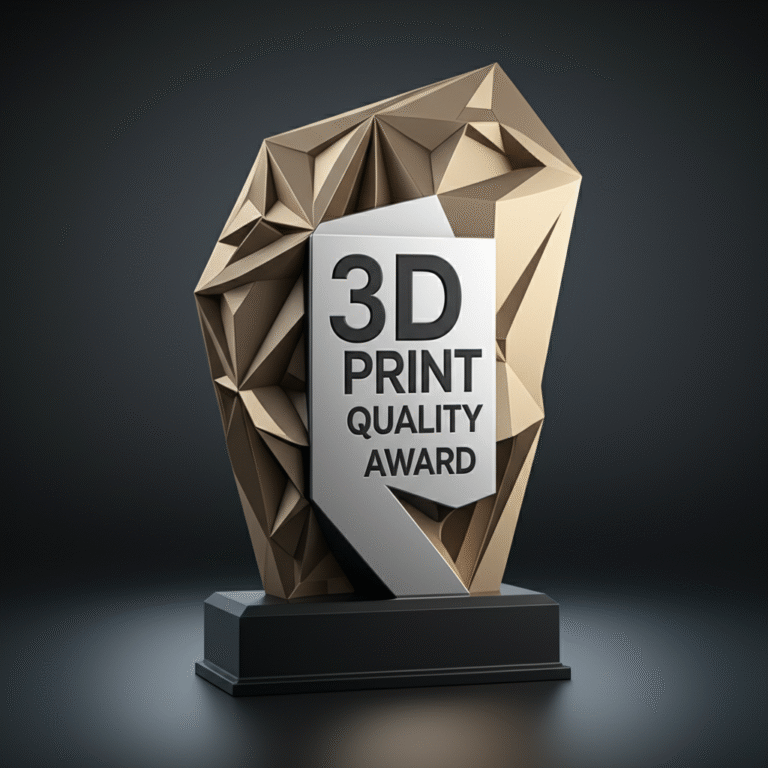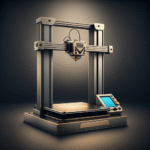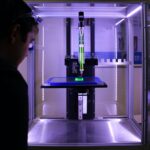Support our educational content for free when you purchase through links on our site. Learn more
Discover 3D Printing: FDM, SLA & SLS Differences Explained! 🤔

Are you diving into the fascinating world of 3D printing but feeling overwhelmed by the choices? You’re not alone! With so many technologies available, it can be tough to figure out which one is right for your project. In this article, we’ll unravel the mysteries of FDM, SLA, and SLS printing technologies, highlighting their unique strengths and weaknesses. Whether you’re a hobbyist, a small business owner, or just curious about the future of manufacturing, understanding these differences can help you make informed decisions.
Did you know that the 3D printing industry is projected to reach a staggering $34.8 billion by 2024? With such rapid growth, knowing how to leverage these technologies can set you apart in a competitive landscape. So, let’s jump in and explore what makes each of these printing methods tick!
Key Takeaways
- FDM (Fused Deposition Modeling): The most accessible and budget-friendly option, perfect for beginners and rapid prototyping.
- SLA (Stereolithography): Offers the highest detail and smoothest finishes, ideal for intricate designs and professional applications.
- SLS (Selective Laser Sintering): Best for creating strong, functional parts without the need for support structures, making it suitable for industrial applications.
- Choosing the Right Technology: Your choice should depend on your specific needs—budget, detail, and functionality are key factors to consider.
Ready to explore the world of 3D printing? 👉 Shop FDM Printers on Amazon | 👉 Shop SLA Printers on Formlabs | 👉 Shop SLS Printers on Sinterit.
Table of Contents
Quick Tips and Facts
The Evolution of 3D Printing Technologies: A Brief History
What Is FDM 3D Printing? The Basics You Need to Know
What Is SLA 3D Printing? Understanding the Resin Revolution
What Is SLS 3D Printing? The Power of Powder
Comparing FDM, SLA, and SLS: Filament, Resin, and Powder Printers
Pros and Cons of FDM, SLA, and SLS Technologies
Using FDM, SLA, and SLS 3D Printers Together: A Hybrid Approach
Applications of FDM, SLA, and SLS: Where Each Shines
Learn More About SLA and SLS 3D Printing: Resources and Insights
Future Trends in 3D Printing Technologies: What’s Next?
Conclusion
Recommended Links
FAQ
Reference Links
Quick Tips and Facts
- FDM (Fused Deposition Modeling): The most common and budget-friendly option, perfect for beginners! 🏗️
- SLA (Stereolithography): Offers the best surface finish and detail, ideal for intricate designs and prototypes. 🎨
- SLS (Selective Laser Sintering): Great for functional parts without the need for support structures, perfect for complex geometries. 🔩
- Material Variety: FDM uses thermoplastics, SLA uses liquid resins, and SLS uses powdered materials.
- Applications: FDM is best for rapid prototyping, SLA excels in detailed models, and SLS is favored for industrial applications.
- Cost Considerations: FDM is the most affordable, while SLS tends to be the most expensive due to equipment costs.
The Evolution of 3D Printing Technologies: A Brief History

3D printing has come a long way since its inception in the 1980s. The first technology, Stereolithography (SLA), was developed by Chuck Hull in 1986, paving the way for various additive manufacturing methods. Fast forward to today, and we have three dominant technologies: FDM, SLA, and SLS. Each has its unique strengths and weaknesses, making them suitable for different applications.
FDM emerged as the most accessible option for hobbyists and small businesses, while SLA and SLS found their niche in industries requiring precision and durability. As we explore these technologies, you’ll see how they stack up against each other and which one might be the best fit for your needs!
What Is FDM 3D Printing? The Basics You Need to Know
FDM Overview
Fused Deposition Modeling (FDM), also known as Fused Filament Fabrication (FFF), is the most widely used 3D printing technology, especially among hobbyists. It works by extruding melted thermoplastic filament through a nozzle, layer by layer, to create a 3D object.
FDM Rating Table
| Aspect | Rating (1-10) |
|---|---|
| Design | 7 |
| Functionality | 8 |
| Ease of Use | 9 |
| Material Variety | 8 |
| Surface Finish | 6 |
| Cost-Effectiveness | 9 |
Pros and Cons of FDM
Pros:
- Affordable: Great entry point for beginners. ✅
- Material Variety: Works with a range of materials like PLA, ABS, and PETG.
- User-Friendly: Easy to set up and operate.
Cons:
- Surface Finish: Often requires post-processing for a smooth finish. ❌
- Strength: Parts can be weaker in the vertical direction due to layer adhesion.
- Support Structures: Complex designs may require additional supports.
For more on FDM printers, check out our 3D Printer Reviews.
What Is SLA 3D Printing? Understanding the Resin Revolution
SLA Overview
Stereolithography (SLA) is the first 3D printing technology and is renowned for its ability to produce highly detailed and smooth parts. It uses a UV laser to cure liquid resin layer by layer.
SLA Rating Table
| Aspect | Rating (1-10) |
|---|---|
| Design | 9 |
| Functionality | 8 |
| Ease of Use | 7 |
| Material Variety | 7 |
| Surface Finish | 10 |
| Cost-Effectiveness | 6 |
Pros and Cons of SLA
Pros:
- High Detail: Excellent for intricate designs and fine features. ✅
- Smooth Surface Finish: Minimal post-processing required.
- Versatile Materials: Wide range of resins for different applications.
Cons:
- Cost: Higher material costs compared to FDM. ❌
- Post-Processing: Requires cleaning and curing, which can be time-consuming.
- Toxicity: Some resins can be hazardous, requiring careful handling.
If you’re interested in SLA printers, check out our Beginner’s Guide to 3D Printing.
What Is SLS 3D Printing? The Power of Powder
SLS Overview
Selective Laser Sintering (SLS) is a powerful technology primarily used in industrial applications. It uses a laser to fuse powdered material, creating strong and functional parts without the need for support structures.
SLS Rating Table
| Aspect | Rating (1-10) |
|---|---|
| Design | 8 |
| Functionality | 9 |
| Ease of Use | 6 |
| Material Variety | 8 |
| Surface Finish | 7 |
| Cost-Effectiveness | 5 |
Pros and Cons of SLS
Pros:
- No Support Structures: Allows for complex geometries and movable parts. ✅
- Durable Parts: Ideal for functional prototypes and end-use products.
- Material Reusability: Unused powder can be recycled for future prints.
Cons:
- Cost: High initial investment for equipment. ❌
- Surface Finish: Parts may require post-processing for a smoother finish.
- Longer Print Times: Larger objects can take significant time to print.
For more on SLS technology, visit our 3D Printer Brands.
Comparing FDM, SLA, and SLS: Filament, Resin, and Powder Printers
| Parameter | FDM (Fused Deposition Modeling) | SLA (Stereolithography) | SLS (Selective Laser Sintering) |
|---|---|---|---|
| Material Type | Thermoplastic Filaments | Liquid Resins | Powdered Materials |
| Surface Finish | Moderate | Excellent | Good |
| Print Speed | Fast | Moderate | Slow |
| Cost | Low | Moderate | High |
| Best Use Cases | Prototyping, Education | Detailed Models | Functional Parts |
Pros and Cons of FDM, SLA, and SLS Technologies
FDM
- Pros: Affordable, easy to use, versatile.
- Cons: Lower detail, requires supports.
SLA
- Pros: High detail, smooth finish, versatile materials.
- Cons: Higher costs, requires post-processing.
SLS
- Pros: No supports, strong parts, reusable materials.
- Cons: High equipment costs, longer print times.
Using FDM, SLA, and SLS 3D Printers Together: A Hybrid Approach
Many businesses leverage the strengths of all three technologies to optimize their workflows. For instance, a company might use FDM for rapid prototyping, SLA for detailed models, and SLS for functional parts. This hybrid approach allows for flexibility and efficiency in production.
Real-World Examples
- Brose: Utilizes FDM, SLA, and SLS for various applications.
- Labconco: Combines SLA, FDM, and SLS for product development.
- Vital Auto: Employs all three technologies for automotive parts.
Applications of FDM, SLA, and SLS: Where Each Shines
FDM Applications
- Prototyping: Fast and cost-effective for initial designs.
- Education: Widely used in schools for teaching 3D printing concepts.
SLA Applications
- Jewelry Design: Perfect for intricate designs and casting patterns.
- Medical Models: Ideal for dental and surgical planning.
SLS Applications
- Industrial Prototyping: Strong parts for functional testing.
- Low-Volume Production: Cost-effective for small batch manufacturing.
Learn More About SLA and SLS 3D Printing: Resources and Insights
For those looking to dive deeper into SLA and SLS technologies, we recommend exploring the following resources:
- Formlabs Blog: FDM vs. SLA vs. SLS: How to Choose the Right 3D Printing Technology
- Sinterit Blog: FDM vs. SLA vs. SLS Comparison
- Best 3D Printer™ Articles: Check out our 3D Printing Industry News for the latest updates.
Future Trends in 3D Printing Technologies: What’s Next?
As technology advances, we can expect to see improvements in speed, material diversity, and automation across all three 3D printing technologies. Innovations like multi-material printing and AI-driven design will likely revolutionize how we approach 3D printing in the future.
Conclusion

In the world of 3D printing, FDM, SLA, and SLS each have their unique strengths and weaknesses. Choosing the right technology depends on your specific needs, whether it’s budget, detail, or functionality. By understanding these differences, you can make an informed decision that best suits your project.
For more insights and reviews, check out our Recommended Links.
Recommended Links
FAQ

Q: Which 3D printing technology is the best for beginners?
A: FDM is generally the best choice for beginners due to its affordability and ease of use.
Q: Can I use multiple 3D printing technologies for a single project?
A: Absolutely! Many businesses use a combination of FDM, SLA, and SLS to leverage the strengths of each technology.
Reference Links
Conclusion

In the realm of 3D printing, FDM, SLA, and SLS technologies each bring unique strengths to the table. FDM is the go-to choice for beginners and budget-conscious users due to its affordability and ease of use. SLA shines with its exceptional detail and smooth finishes, making it perfect for intricate designs and prototypes. Meanwhile, SLS stands out in industrial applications, offering strong, functional parts without the need for support structures.
Summary of Positives and Negatives
-
FDM:
- Positives: Affordable, user-friendly, versatile material options.
- Negatives: Lower detail and strength compared to SLA and SLS, requires supports for complex designs.
-
SLA:
- Positives: High resolution, excellent surface finish, wide material range.
- Negatives: Higher material costs, complex post-processing, and potential toxicity of resins.
-
SLS:
- Positives: Strong, durable parts, no need for support structures, and reusable materials.
- Negatives: High initial equipment costs, longer print times, and potential rough surface finishes.
In conclusion, the choice of technology ultimately depends on your specific needs and applications. If you’re looking for a budget-friendly option for basic prototyping, FDM is your best bet. For detailed models and intricate designs, SLA is the way to go. And if you need robust, functional parts for industrial use, SLS is the champion.
We hope this guide has helped clarify the differences between these technologies and equipped you with the knowledge to make an informed decision. Happy printing! 🎉
Recommended Links
- 👉 Shop FDM Printers on: Amazon | Walmart | Official Prusa Website
- 👉 Shop SLA Printers on: Amazon | Walmart | Formlabs Official Website
- 👉 Shop SLS Printers on: Amazon | Walmart | Sinterit Official Website
- Recommended Books on 3D Printing:
FAQ

What are the advantages and disadvantages of FDM 3D printing compared to other methods?
Advantages:
- Cost-Effective: FDM printers and materials are generally less expensive than SLA and SLS options, making it accessible for beginners and hobbyists.
- Ease of Use: FDM printers are user-friendly and require less technical knowledge to operate.
- Material Variety: A wide range of thermoplastic materials is available, allowing for diverse applications.
Disadvantages:
- Lower Resolution: FDM typically produces lower detail and surface finish compared to SLA and SLS.
- Requires Supports: Complex designs often need additional support structures, which can complicate the printing process and require post-processing.
How do SLA and SLS 3D printing differ in terms of print resolution and surface finish?
SLA:
- Print Resolution: SLA printers can achieve extremely high resolutions, often down to 25 microns, allowing for intricate details and smooth surfaces.
- Surface Finish: SLA parts have a superior surface finish, making them ideal for applications requiring aesthetic quality, such as jewelry or dental models.
SLS:
- Print Resolution: SLS printers typically have a lower resolution than SLA, generally around 100-200 microns, but still produce functional parts with good accuracy.
- Surface Finish: While SLS parts can be strong and durable, they often have a slightly rougher surface finish compared to SLA, which may require post-processing for a smoother finish.
What are the typical applications and use cases for each of the FDM, SLA, and SLS 3D printing technologies?
- FDM: Commonly used for rapid prototyping, educational purposes, and creating functional prototypes. Ideal for hobbyists and small businesses.
- SLA: Best suited for detailed models, dental applications, jewelry design, and any project requiring high precision and a smooth finish.
- SLS: Primarily used in industrial applications for functional prototypes, low-volume production, and parts that require durability and strength, such as automotive and aerospace components.
Which 3D printing technology is best suited for producing functional prototypes and end-use products with high durability?
SLS is the best choice for producing functional prototypes and end-use products that require high durability. Its ability to create strong parts without the need for support structures allows for complex geometries, making it ideal for applications in industries like automotive, aerospace, and medical devices. The materials used in SLS printing, such as nylon and TPU, provide excellent mechanical properties, ensuring that the final products can withstand real-world conditions.





